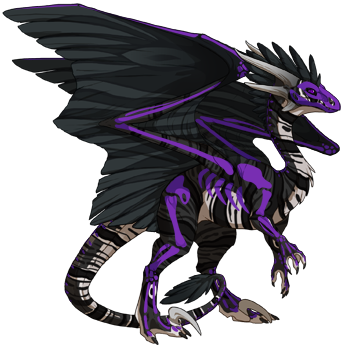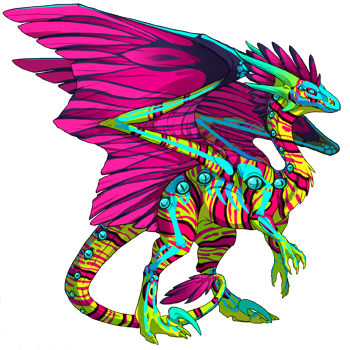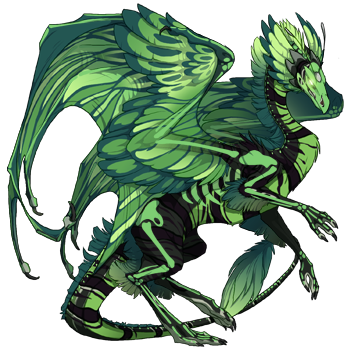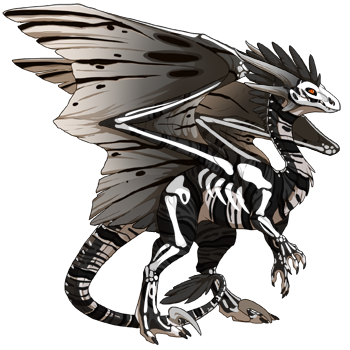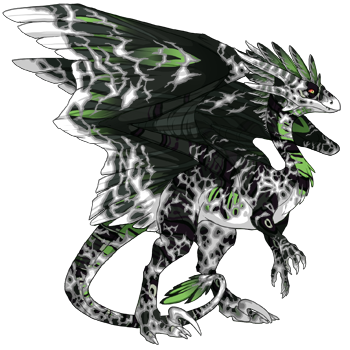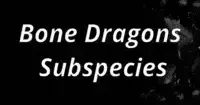
Intro - Variants - Hybrids -Sales - Pairs/Pinglists - Affiliates - Registry
Ratio is 1:1000
I am subscribed, DO NOT ping me!
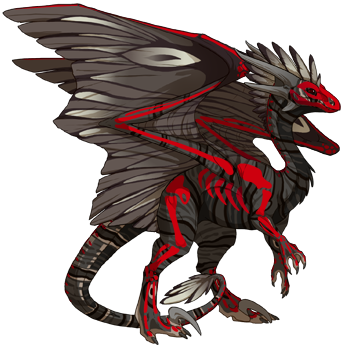
Eyes: All eye colours and types accepted
Primary: Coal or Oilslick Lionfish
Secondary: Stone - Hickory Trail (Clay is best avoided, but is allowed)
Tertiary: Any Ghost (Bright colours preferred)
Bloodbone Vultures
Same Requirements as above
Level 20+
Life in the Scarred Wasteland is tough. Resources are scarce, and only the strongest and most adaptive survive. Especially in the Abiding Boneyard, where many unfortunate souls have met their end. In Plague however, one individuals misfortunate is often another’s salvation. None embody this sentiment better than Pestilent Vultures. Like their namesakes they can often be seen trailing dying wildlife, ever-patiently waiting for their prey to succumb to the harsh conditions found within the plague-stricken lands. Although the subspecies had its genesis in the Abiding Boneyard, where its highest population can be found, these industrious Wildclaws can now be found across Sornieth.
Primarily scavengers, they are strictly carnivorous, but are not picky as to the type or quality of meat. They are all but immune to food borne diseases, and are even capable of digesting bone. Their feathers are breeding grounds for pathogenic organisms, and they will sometimes purposely infect dragons to selectively breed deadlier strains. The deadliest strains are mixed in with their body paint. This deters most would-be aggressors, as run-ins with a Pestilent Vulture typically result in nasty infections. This habit of coating their bodies in disease gives them a very pungent, putrid odour. You can often smell a Vulture before you can see one, and their roosts are typically surrounded by an overwhelming stench of rotten meat.
Body Paint
The skeletal markings adorning all members of this subspecies are not natural patterns, but instead are a type of paint, applied at first by the Vulture’s parents and later by the individual themselves. Every family has its own unique pattern, one which has in most cases been passed down through generations. The exact meaning of the different colours varies by clan, but generally individuals with bright red paints are those held in the highest regard, as they are typically the strongest and most cunning. Materials with which to make this paint are one of the few things most Vultures will fight for. The exact ingredients of the pigment vary and, like everything else in Vulture society, are usually made of whatever materials can be found.
Society:
They live in large familial groups, that disperse during the day to hunt and reconvene at dusk. These flocks can wander quite far in search of food, but maintain a home territory. Although these groups usually lack a true leader, red painted Vultures, referred to as “Bloodbone Vultures”, can often be seen “commanding” their fellow Vultures, particularly in battle. These dragons are usually quite hostile to Vultures from other flocks found within their territory.
They usually prefer to flee from conflict. When they do fight, they often rely heavily on their innate magic, and prefer to work as a group to wear their opponents down. What they lack in strength, they make up for in stamina, waiting for their enemy to tire before moving in for the kill. Their natural magic can be used to produce illusions to confuse and frighten foes, the streaks along their wings and hide potentiate the effects by reflecting and refracting light. These illusions are especially potent at dusk, when there’s still enough sunlight to reflect, but not enough for most dragons to clearly see. At its most basic the play of light across their striated wings makes it difficult to determine the dragon’s exact location. Particularly gifted Vultures can even use this ability is to conjure images of reinforcements. Outside of combat, this magic is often used by Vultures to communicate with others of their kind.
Courtship:
Vultures typically mate for life. Before attempting to impress a potential mate, the dragon will apply a fresh coat of their characteristic paint, the brighter the better. Many individuals will mix bioluminescent insects or fungi into the paint during this time, so their markings are easier seen in the dim light (Vulture courtship rituals are traditionally performed during or after sunset). This can be quite a startling thing for a dragon unaware of this practice, as the Vulture’s dark plumage renders them nearly invisible under low light conditions, leaving their glowing patternation to appear like a spectre amidst the darkness. Potential mates are presented with a gift of apparel, traditionally a necklace of bones. When a Vulture has made their decision, they will draw their family crest on the new mate’s chest, over their heart, and allow the selected dragon to do the same to them. Their nests are well camouflaged and undecorated. Naturally, they are usually comprised of whatever a pair can find nearby.
Apparel:
The clothing choices of a Vulture depend mostly on what resources the dragon has available to them. Some things are relatively consistent, however. Homemade outfits are the way to go, and sacrificing practically for beauty is a foolish mistake. They generally prefer apparel that leaves their markings visible.
Miscellaneous:
They are distant cousins of Effluvial Crows. The two species rarely get along well, but can occasionally be seen cooperating to achieve a common goal.
Condors
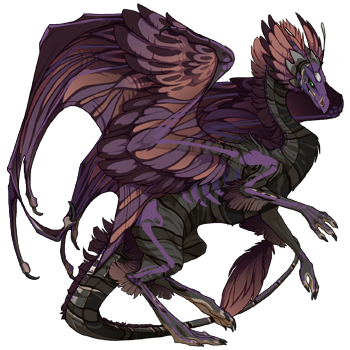
Breed: Skydancers only
Eyes: All eye colours and types accepted
Primary: Coal or Oilslick Lionfish
Secondary: Stone - Hickory Trail (Clay is best avoided, but is allowed)
Tertiary: Any Ghost (Bright colours preferred)
Bloodbone Condors:
Same Requirements as above
Level 20+
It is quite common to see Skydancers bearing dull plumage and skeleton-like markings similar to those of Vultures living within the scavenger’s flocks. These dragons are called “Condors” by their larger brethren, and while they are usually welcomed within Vulture society, they are viewed as quite strange. Unlike their Wildclaw cousins, Condors are quite welcoming of outsiders, something that can cause quite a bit of friction between them and Vultures. Some Condors will even help guide lost dragons to safety, instead of leaving them to die and robbing them. Perhaps this behaviour has something to do with Skydancer’s innate empathic abilities. Regardless of its cause, many Vulture flocks have found that the best use for these dragons is to help them communicate and bargain with neighbouring dragon clans.
Although it is rare for a Pestilent Vulture to take a mate from outside the subspecies, it has been known to occur. The first Condor most likely arose from such a pairing. Though they were originally rare, the variant has now overtaken the original in terms of pure numbers.
Although a Condor’s diet, like that of all skydancers, consists mainly of plants and insects, they are known to consume meat alongside their Vulture brethren. This doesn't seem to harm them.
Condors are more agile in the air than Vultures, but lack the impressive stamina that allows their larger kin to hound both prey and enemies until exhaustion. They are often employed as scouts, and when in active battle tend to use their superior maneuverability to outflank their opponents and end fights quickly. Their agility, combined with their disorienting magic and patterning makes them difficult targets.
Ferals
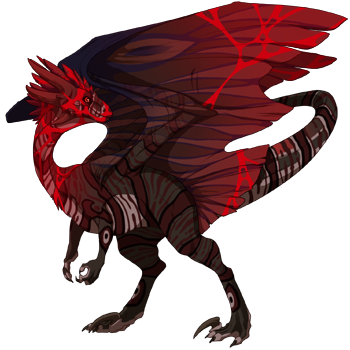
Breed: Wildclaws and Skydancers only
Eyes: All eye colours and types accepted
Primary: Coal or Oilslick Lionfish
Secondary: Stone - Hickory Trail (Clay is best avoided, but is allowed)
Tertiary: Any Crackle, Flecks, Koi, Smirch (Bright colours preferred)
Bloodbone Vultures/Condors
Same Requirements as above
Level 20+
While Vultures are typically fleet-footed scavengers, within the Scarred Wasteland, there lurks a more aggressive, confrontational breed. These so-called “Feral” Vultures are nomadic pack hunters, always on the lookout for fresh meat. Their roving natures and ravenous appetites have lead to many comparisons between these creatures and Mirrors. Some even say they are the children of a Pestilent Vulture and the four-eyed dragons. While this is nothing more than rumour, the resemblance between the nomadic, ever-changing packs of these dragons, and those of Mirrors is impossible to deny.
To other Vultures, Ferals appear uncivilized, animalistic even. Their society is completely different from that of typical Vultures. Their paint is more for intimidation than identification, and they have little care for familial ties, allowing any willing and able Vulture to join their packs. They are mostly physical fighters, and rarely possess the same magical capabilities as their non-feral brethren, due to lack of training, and the fact that their messy style of paint often obscures their reflective markings. One of the few similarities between more traditional Vultures and Feral Vultures is their clothing choices, although Ferals are much less picky about where their apparel comes from, and are just as happy to steal ready-made garments from dragons as they are to craft their own from scraps.
Feral Condors are rare, as their frail bodies are not well suited to the violent lifestyle of typical Ferals. They tend to act as tacticians and scouts during combat, their energy-sensing abilities allowing them to see past the chaos and noise of a battle to reveal the location and emotional state of enemies.
|
xxxxxxx |
xxxxxxxxxxxxxxxxxxxxxxxxxxxxx |
Other stuff
My Levelling Service My Stock the Pond Pairs Plague Subspecies Masterlist Formatting is pain You found this by accident |

































